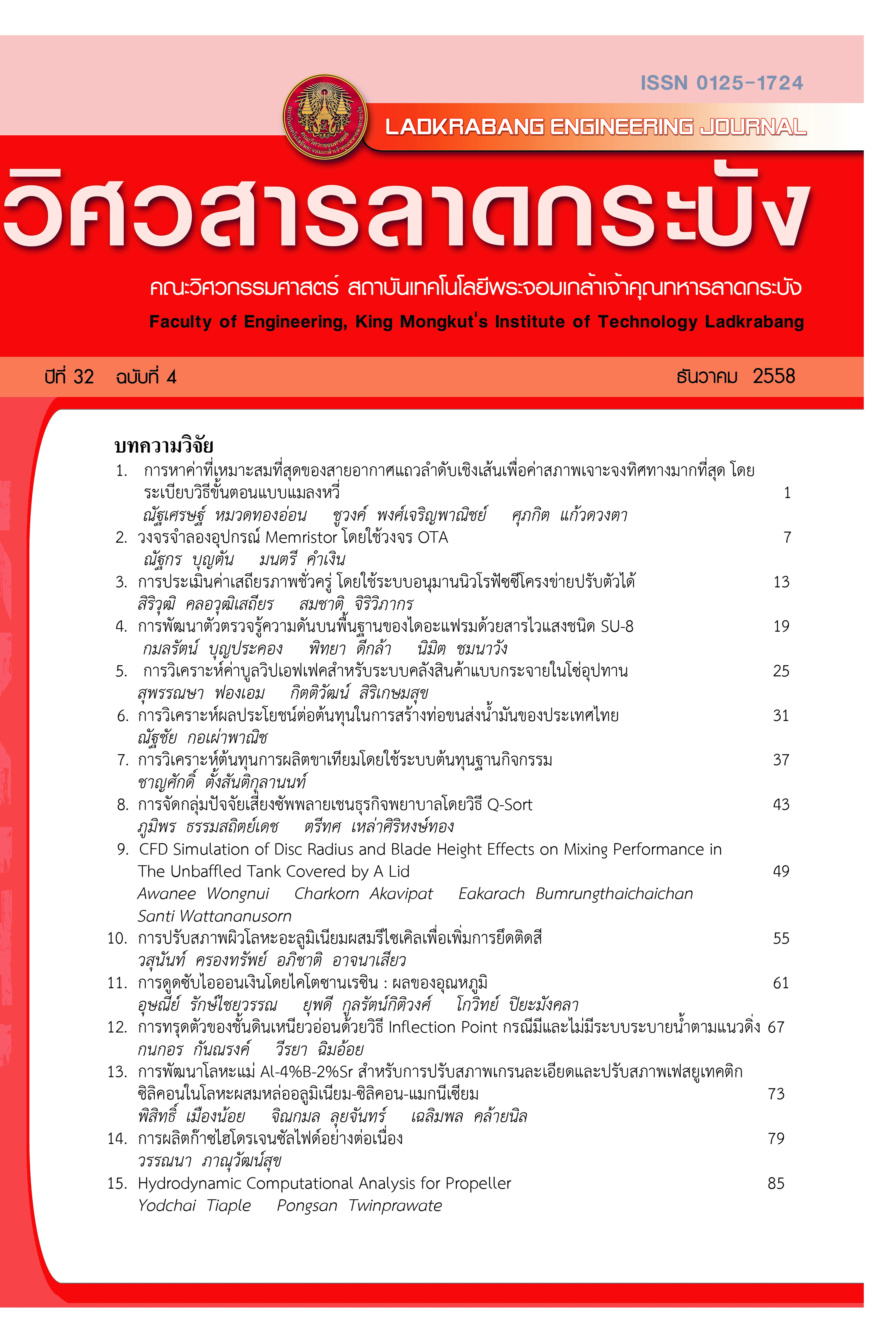Benefits-Costs Analysis for Oil Pipelines in Thailand
Keywords:
Benefit cost analysis,, internal rate of return,, Oil PipelineAbstract
This research presents the economic worthiness analysis for the oil-pipeline-construction project in the north and the northeast of Thailand. The northern route traverses through Saraburi, Kampangphet, and Lampang, while, the norhteastern moves onward from Saraburi to Nakhonratchasima and Khonkaen. Research methodologies start with forecasting oil demand and volume throughput. Then, project investment and operating costs and relevant benefits are evaluated. These benefits are revenue from pipeline services, and, reduction of relating accidents, pollution, oil usage in transportation, and transportation cost. The project IRR for each route are 10.53% and 12.86% respectively. In addition, the benefits-cost ratio, using a discount rate of 10%, of the northern route is 1.05 and 1.28 for the northeastern.
References
[2] Department Of Energy Business, The development of Thailand's transportation and fuel oil reservation infrastructure master plan, 2004.
[3] Energy Research Institute, Development of Thailand’s 20 Years Energy Master Plan, 2013.
[4] Department of Energy Business. (2015). Sales volume of fuel oil, by province in 2014. Available: http://www.doeb.go.th/info/value_ fuel_province.php
[5] Chulalongkorn University, Environmental impact accessment evaluation report of oil pipelines in Thailand, 2015.
[6] D. Furchtgott-Rot, "Pipelines are safest for transportation of oil and gas," Manhattan Institute for policy research, vol. 23, pp. 1-10, June 2013.
[7] World Life Expectancy. (2015). Road Traffic Accidents. Available: http://www.worldlifeexp ectancy.com/
[8] Department Of Highways, Value of losses from traffic accidents in Thailand, 2007.
[9] Department Of Environmental Quality Promotion, Manufacturing guideline of carbon lable's product, 2011.
[10] Department Of Land Transport, The study of truck's transportation costs, 2010.
Downloads
Published
How to Cite
Issue
Section
License
The published articles are copyrighted by the School of Engineering, King Mongkut's Institute of Technology Ladkrabang.
The statements contained in each article in this academic journal are the personal opinions of each author and are not related to King Mongkut's Institute of Technology Ladkrabang and other faculty members in the institute.
Responsibility for all elements of each article belongs to each author; If there are any mistakes, each author is solely responsible for his own articles.






